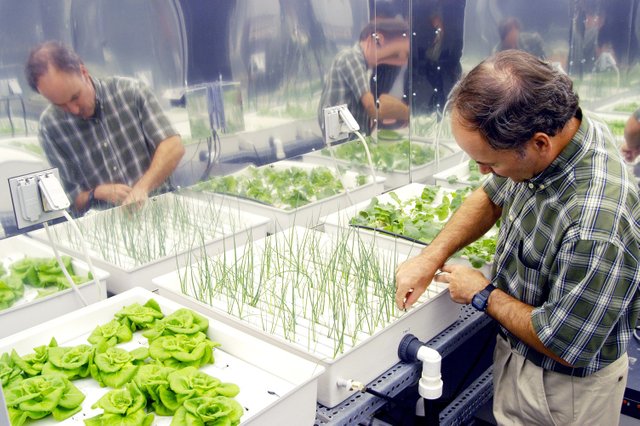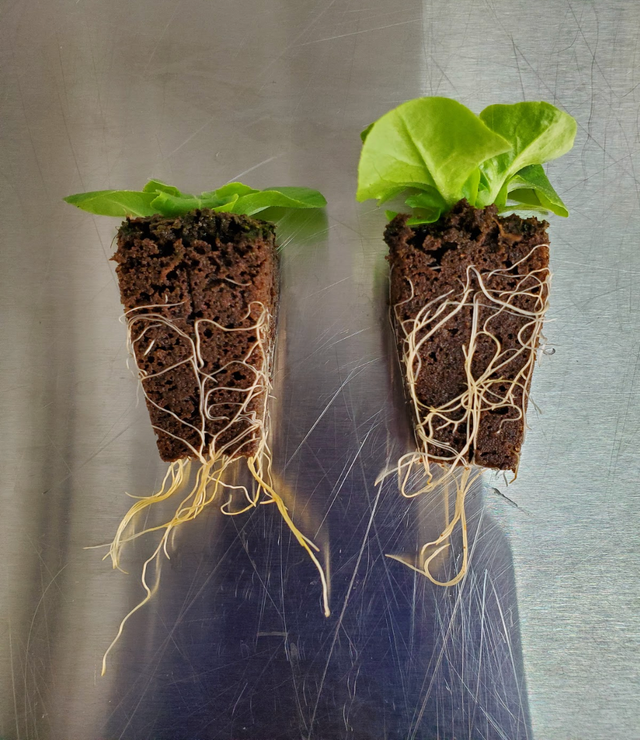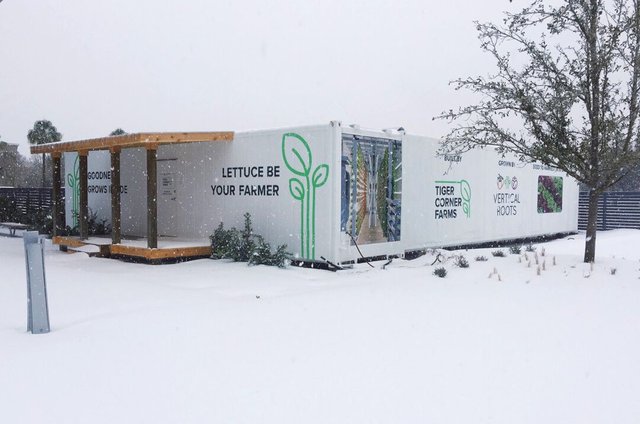
.jpeg)


The What and Why of Hydroponic Farming
Close up of a farmer holding an arugula plant with roots
What is hydroponics?
How does it work? How does hydroponic farming compare to traditional farming?
When we tell people that we grow our produce using hydroponics, we usually get something close to this response:
“Sounds cool…sounds like it has something to do with health food maybe? What even is it?”
For all the hydro-curious folks out there, we’ve put together a primer on the basics of hydroponic farming.
So What is Hydroponics?
Put simply: Hydroponics is a way to skip the soil, sub in a different material to support the roots of the plant, and grow crops directly in nutrient-rich water.
There are multiple approaches to designing hydroponic systems, but the core elements are essentially the same.
What you need:
Fresh water:
Were talking primo, filtered stuff with a balanced pH. Most plants like water with a pH level around 6–6.5. You can adjust the acidity of your water with over-the-counter solutions found at your local hardware, garden, or hydroponic store.
Oxygen:
Don’t drown your plants! In traditional farming, roots can get the oxygen needed for respiration from pockets of air in the soil. Depending on your hydroponic setup, you will either need to leave space between the base of your plant and the water reservoir, or you’ll need oxygenate your container (think of bubbles in a fish tank), which you can accomplish by buying an air stone or installing an air pump.
Root Support:
Even though you don’t need soil, your plant’s roots still need a little something to hold on to. Typical materials include vermiculite, perlite, peat moss, coconut fiber, and rockwool. Stay away from materials that might compact (like sand) or that don’t retain any moisture (like gravel).
Nutrients:
Your plant is going to need plenty of magnesium, phosphorus, calcium, and other nutrients to stay healthy and productive –– just like plants growing in the ground need healthy soil and fertilizer. When you’re growing plants without soil, this “plant food” must be included in the water that’s feeding your plants. While you can technically make your own nutrient solution, it’s easy to buy mixtures online and in stores.
Light:
If you’re growing your plants indoors, you might have to invest in some special lighting. Each kind of plant will have a different requirement for the amount of light it needs and for the placement of lights (typically referred to as Daily Light Integral or DLI).

While there are other elements to consider as you increase the sophistication of your hydroponic farm (for instance, things like CO2 supplementation), the five listed above are the most foundational elements of any hydroponic system.
By monitoring and adjusting these key variables, you can begin to discover precisely what your plants need to thrive, and replicate those conditions for every grow in the future.
Why Grow Without Soil?
This seemingly subtle shift in how we make food (skipping the soil, that is) is actually revolutionary –– it allows growers to produce food anywhere in the world, at any time of the year, and to net higher yields with fewer resources.
Grow Anywhere
Yep. Take that, climate change. Growing seasons and regions are in major flux right now as temperatures change and growing conditions change along with them. Even in “normal” conditions, there are plenty of places where the ground just isn’t conducive for farming (like deserts, concrete jungles…you get the gist).

Right now, most of the vegetables you come across in a store have been shipped in from afar, and have lost nutritional value along the way.
Using hydroponics, we can create hyper-local food systems – and we are! Our container farms are set up right in the communities and regions that we serve. It’s even possible to put a farm directly behind restaurants that want ultra-fresh produce! And when you’re growing hydroponically, you don’t have to hit pause for a season or risk crop loss from inclement weather.
Higher Yields
Plants grown in well-managed hydroponic systems are living the good life. Since roots are bathed in all the nutrients they need, plants spend more time growing upward and less time and energy growing extensive root systems to search for food.
Growth rates vary based on the type of system and quality of care, but hydro plants can mature up to 25 percent more quickly than the same plants grown in soil, with increased crop yield, to boot.
Fewer Resources
We bet you didn’t see this coming: hydroponic systems actually use less water than traditional soil-based systems. This is because closed systems aren’t subject to the same rates of evaporation. Plus, the water used in hydroponic systems can be filtered, re-populated with nutrients, and fed back to plants again so that water is constantly being recycled instead of wasted!
At Vertical Roots, our systems use up to 98 percent less water than traditional soil-based systems.
Other “resources” indoor hydroponic plants don’t need? Pesticides and other potentially harmful chemicals, since the hydro crops are protected from many of the pests and plant diseases found outdoors in soil-based farms.
Easy Troubleshooting
How many times have you walked out to your garden and seen one of your plants thriving while its next-door-neighbor is drooping? In that situation, it’s almost impossible to know which variable is negatively affecting your poor plant. Is it a pest problem? Are the nutrients in the soil different in that spot? Has this plant become your dog’s urinal?
With a hydroponic system, you know exactly what conditions your plants are being grown in. As such, you can easily isolate variables and experiment! Once you find the perfect formula of light, pH balance, and nutrients, you can replicate success without always getting hit with curveballs.